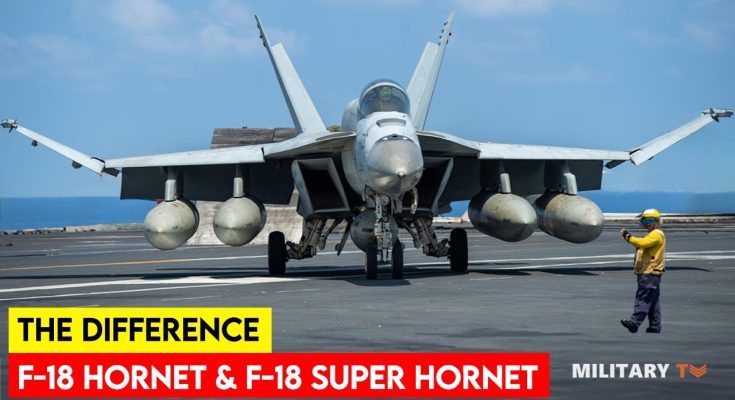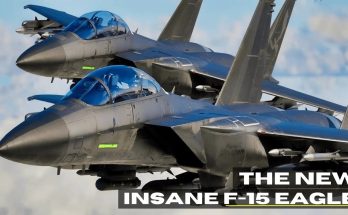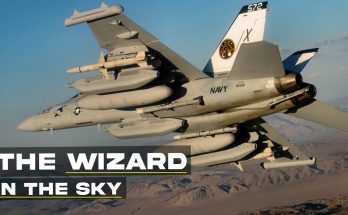The F/A-18 Hornet and F/A-18 Super Hornet are both multi-role fighter aircraft developed by McDonnell Douglas (now part of Boeing) for the U.S. Navy, but they differ in several key aspects such as size, capability, performance, and role. Below are the main differences between the two aircraft:
1. Design and Size
-
F/A-18 Hornet: The original F/A-18 Hornet, first introduced in the late 1970s, was designed to serve as a versatile carrier-based multirole fighter. The F/A-18 Hornet is relatively smaller in size, with a wingspan of 37.5 feet (11.43 meters) and a length of 56.3 feet (17.1 meters). It was developed for a range of missions, from air superiority to close air support, and could operate off aircraft carriers with its robust landing gear and tailhook.
-
F/A-18 Super Hornet: The Super Hornet is a larger, upgraded version of the original Hornet. It was introduced in the late 1990s to address the growing demands of modern combat. The Super Hornet features a wingspan of 44.9 feet (13.7 meters) and a length of 60.3 feet (18.4 meters), making it approximately 25% larger than the original Hornet. This increase in size allows for more fuel capacity, greater payload, and additional internal space for advanced avionics and systems.
2. Performance and Range
-
F/A-18 Hornet: The standard Hornet has a top speed of around 1,800 mph (2,335 km/h) and a combat radius of approximately 400 nautical miles. Its range and fuel capacity are more limited compared to the Super Hornet, making it less suited for extended missions without the use of aerial refueling.
-
F/A-18 Super Hornet: The Super Hornet is designed to have greater range and endurance. With a top speed of about 1,190 mph (1,915 km/h) and a combat radius of around 450-500 nautical miles, the Super Hornet has a longer operational range than the original Hornet. Its larger fuel tanks and more efficient engines allow it to perform missions for longer durations without needing refueling as frequently as the F/A-18 Hornet.
3. Avionics and Systems
-
F/A-18 Hornet: The F/A-18 Hornet was equipped with the avionics of its time, including radar systems, flight control systems, and weapon targeting systems. While it was highly advanced for its era, it lacked some of the newer technologies found in more modern fighter jets.
-
F/A-18 Super Hornet: The Super Hornet is equipped with more advanced avionics, such as the AN/APG-79 AESA (Active Electronically Scanned Array) radar, which provides better tracking, targeting, and resistance to jamming. The Super Hornet also incorporates advanced cockpit displays, digital flight control systems, and enhanced electronic warfare capabilities. These upgrades improve the aircraft’s ability to operate in contested environments and perform complex missions with greater efficiency and precision.
4. Carrier Operations
-
F/A-18 Hornet: The original Hornet was built to operate from aircraft carriers and could land on and take off from a carrier deck, but its shorter range and slightly smaller size limited some of its operational flexibility.
-
F/A-18 Super Hornet: The Super Hornet is designed with improved carrier operations in mind, including more robust landing gear, a stronger airframe, and enhanced survivability against the stresses of carrier operations. The Super Hornet also features a tailhook designed to handle higher landing speeds, making it better suited for the demanding conditions of modern aircraft carriers.
5. Weapons and Payload
-
F/A-18 Hornet: The Hornet can carry a variety of bombs, missiles, and other munitions, but its internal weapons payload is more limited due to its smaller size and internal space.
-
F/A-18 Super Hornet: The Super Hornet has greater internal and external payload capacity, allowing it to carry a wider variety of weapons. It can carry up to 17,750 pounds (8,000 kg) of munitions, compared to the original Hornet’s payload of about 13,000 pounds (5,897 kg). This makes the Super Hornet more versatile for a wide range of strike missions, from air-to-air combat to precision-guided bomb strikes.
6. Crew Size
-
F/A-18 Hornet: The F/A-18 Hornet is typically a single-seat aircraft, though there is also a two-seat variant (F/A-18D) used for training and certain operational roles.
-
F/A-18 Super Hornet: The Super Hornet is primarily available in both single-seat (F/A-18E) and two-seat (F/A-18F) variants, with the two-seat version being used for training, as well as for roles requiring an additional crew member, such as electronic warfare and tactical operations.
7. Operational History
-
F/A-18 Hornet: The F/A-18 Hornet has been in service since the early 1980s and has seen widespread use in a variety of conflicts, including the Gulf War, the Balkans, Iraq, and Afghanistan. Its smaller size and nimble characteristics made it a reliable and effective multirole aircraft.
-
F/A-18 Super Hornet: The Super Hornet entered service in the early 2000s and has largely replaced the older F-14 Tomcats in the U.S. Navy. Its larger size, longer range, and greater payload capacity make it more effective for the modern needs of the Navy. It has seen action in Libya, Syria, Iraq, and other regions, participating in airstrikes, close air support missions, and air superiority operations.
Conclusion
The F/A-18 Super Hornet is a more advanced, larger, and more capable version of the original F/A-18 Hornet. It offers significant improvements in range, payload, avionics, and survivability, making it better suited to meet the demands of modern warfare. While the F/A-18 Hornet remains an excellent fighter, the Super Hornet is the U.S. Navy’s primary multirole strike fighter and continues to serve as the backbone of naval aviation operations.



